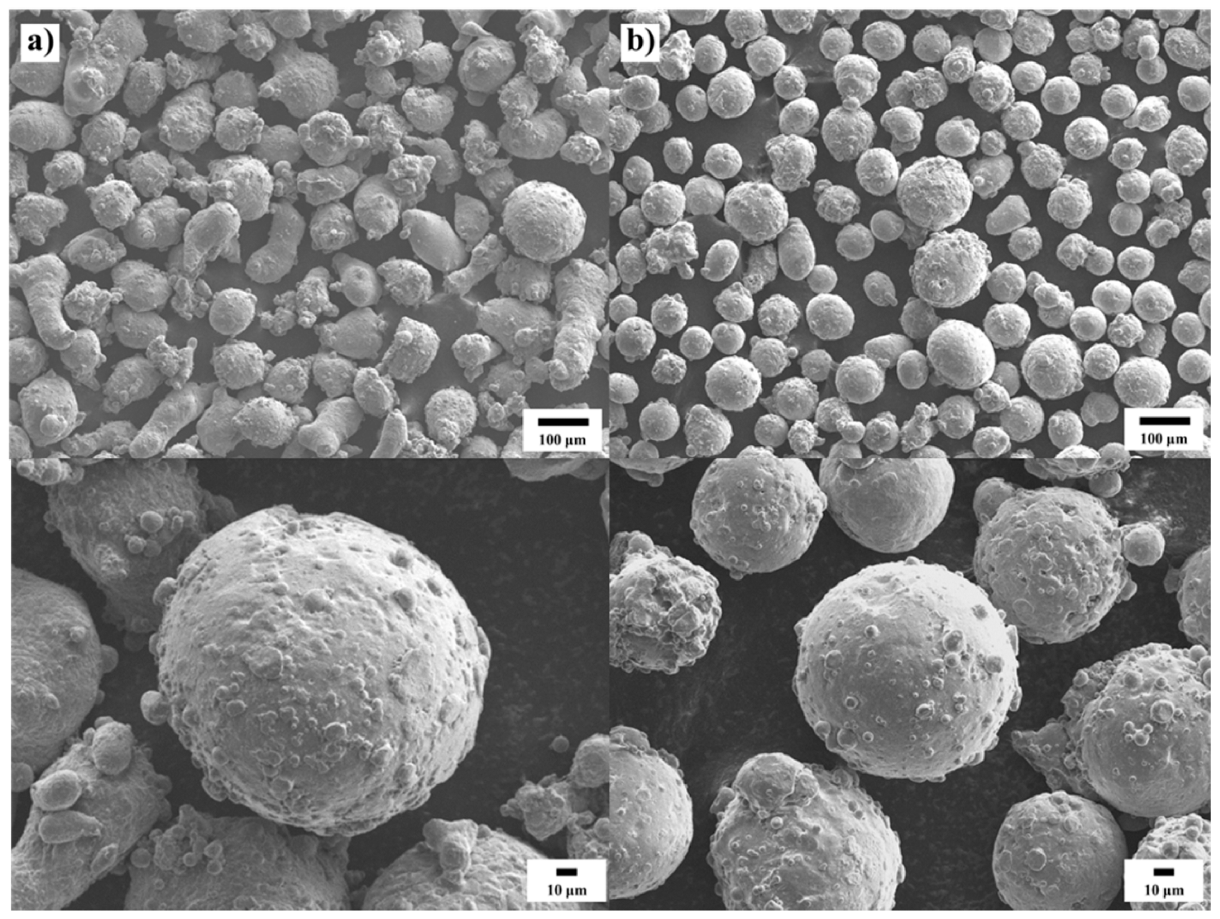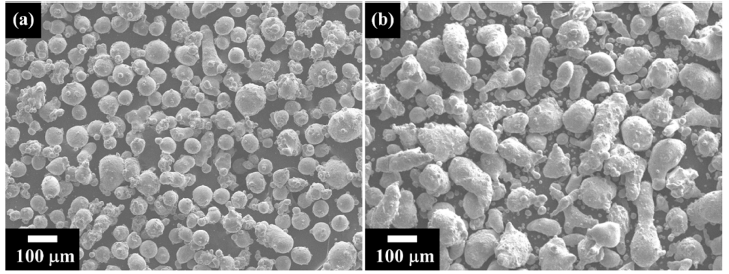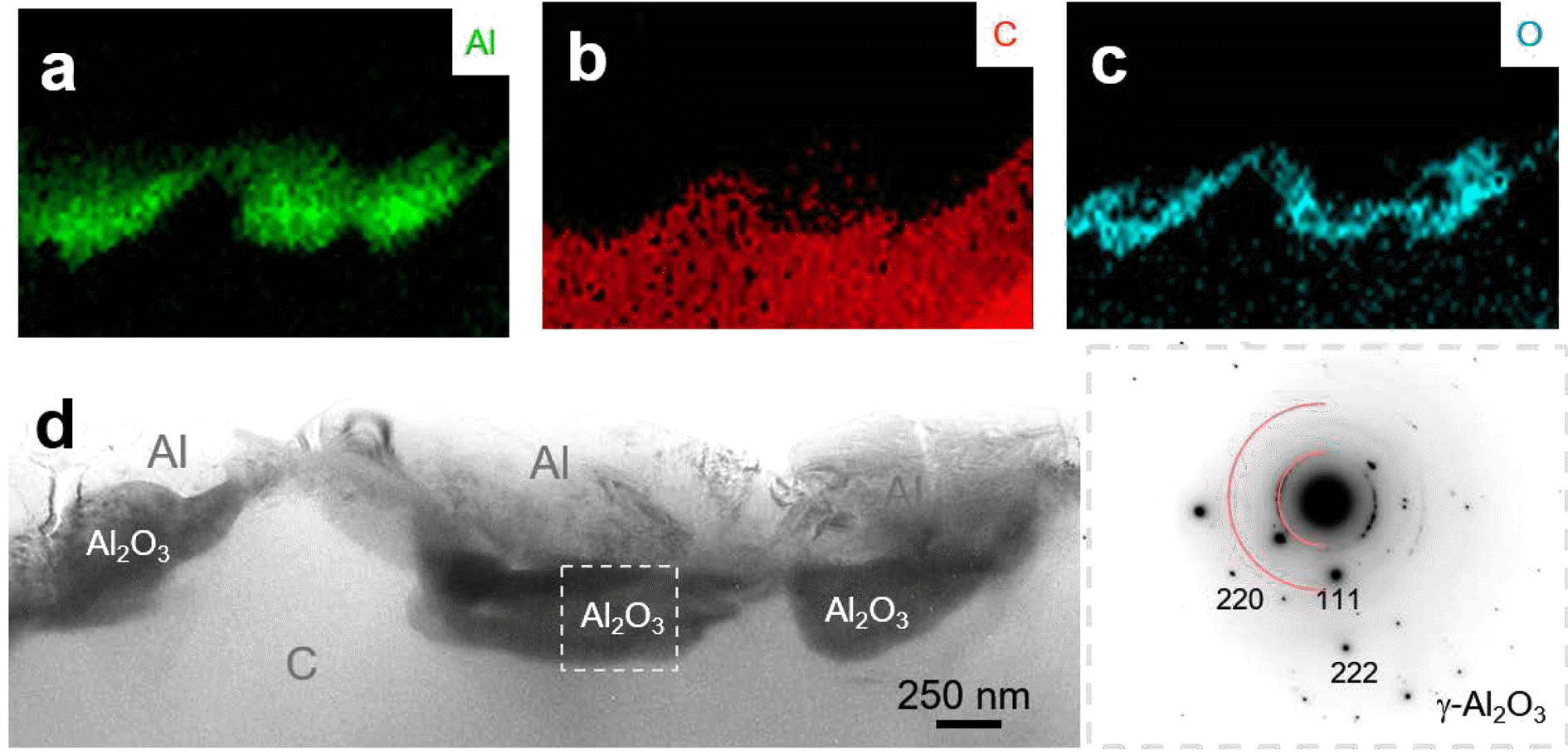Search
- Page Path
- HOME > Search
- [Korean]
- Combinatorial Experiment for Al-6061 and Al-12Si alloy Based on Directed Energy Deposition (DED) Process
- Seoyeon Jeon, Suwon Park, Yongwook Song, Jiwon Park, Hyunyoung Park, Boram Lee, Hyunjoo Choi
- J Powder Mater. 2023;30(6):463-469. Published online December 1, 2023
- DOI: https://doi.org/10.4150/KPMI.2023.30.6.463

- 1,693 View
- 43 Download
- 4 Citations
-
 Abstract
Abstract
 PDF
PDF Aluminum alloys, known for their high strength-to-weight ratios and impressive electrical and thermal conductivities, are extensively used in numerous engineering sectors, such as aerospace, automotive, and construction. Recently, significant efforts have been made to develop novel aluminum alloys specifically tailored for additive manufacturing. These new alloys aim to provide an optimal balance between mechanical properties and thermal/ electrical conductivities. In this study, nine combinatorial samples with various alloy compositions were fabricated using direct energy deposition (DED) additive manufacturing by adjusting the feeding speeds of Al6061 alloy and Al-12Si alloy powders. The effects of the alloying elements on the microstructure, electrical conductivity, and hardness were investigated. Generally, as the Si and Cu contents decreased, electrical conductivity increased and hardness decreased, exhibiting trade-off characteristics. However, electrical conductivity and hardness showed an optimal combination when the Si content was adjusted to below 4.5 wt%, which can sufficiently suppress the grain boundary segregation of the α- Si precipitates, and the Cu content was controlled to induce the formation of Al2Cu precipitates.
-
Citations
Citations to this article as recorded by- Development of Aluminum Alloys for Additive Manufacturing Using Machine Learning
Sungbin An, Juyeon Han, Seoyeon Jeon, Dowon Kim, Jae Bok Seol, Hyunjoo Choi
Journal of Powder Materials.2025; 32(3): 202. CrossRef - Trends in Materials Modeling and Computation for Metal Additive Manufacturing
Seoyeon Jeon, Hyunjoo Choi
journal of Korean Powder Metallurgy Institute.2024; 31(3): 213. CrossRef - The Challenges and Advances in Recycling/Re-Using Powder for Metal 3D Printing: A Comprehensive Review
Alex Lanzutti, Elia Marin
Metals.2024; 14(8): 886. CrossRef - Microstructural Effects on the Mechanical Properties of Ti-6Al-4V Fabricated by Direct Energy Deposition
Juho Kim, Seoyeon Jeon, Hwajin Park, Taeyoel Kim, Hyunjoo Choi
Journal of Powder Materials.2024; 31(4): 302. CrossRef
- Development of Aluminum Alloys for Additive Manufacturing Using Machine Learning
- [Korean]
- 3D-printing-based Combinatorial Experiment for Al-Si-Cu-Mg Alloys
- Yongwook Song, Jungjoon Kim, Suwon Park, Hyunjoo Choi
- J Powder Mater. 2022;29(3):233-239. Published online June 1, 2022
- DOI: https://doi.org/10.4150/KPMI.2022.29.3.233

- 554 View
- 1 Download
-
 Abstract
Abstract
 PDF
PDF Aluminum alloys are extensively employed in several industries, such as automobile, aerospace, and architecture, owing to their high specific strength and electrical and thermal conductivities. However, to meet the rising industrial demands, aluminum alloys must be designed with both excellent mechanical and thermal properties. Computer-aided alloy design is emerging as a technique for developing novel alloys to overcome these trade-off properties. Thus, the development of a new experimental method for designing alloys with high-throughput confirmation is gaining focus. A new approach that rapidly manufactures aluminum alloys with different compositions is required in the alloy design process. This study proposes a combined approach to rapidly investigate the relationship between the microstructure and properties of aluminum alloys using a direct energy deposition system with a dual-nozzle metal 3D printing process. Two types of aluminum alloy powders (Al-4.99Si-1.05Cu-0.47Mg and Al-7Mg) are employed for the 3D printing-based combined method. Nine types of Al-Si-Cu-Mg alloys are manufactured using the combined method, and the relationship between their microstructures and properties is examined.
- [English]
- Chemical Reaction between Aluminium and graphite Crucible During the Fabrication of Spherical Monosized Al particles
- Hansang Kwon
- J Korean Powder Metall Inst. 2018;25(2):99-103. Published online April 1, 2018
- DOI: https://doi.org/10.4150/KPMI.2017.25.2.99

- 994 View
- 5 Download
-
 Abstract
Abstract
 PDF
PDF Spherical monosized pure aluminum (Al) particles are successfully fabricated by the pulsated orifice ejection method (POEM). The surface reaction between Al and the graphite crucible is investigated by analysing the microstructure and chemical composition of the materials. No significant chemical reaction occurs between Al and the graphite owing to the crystalline Al oxide (γ-Al2O3) layer generated in the initial state. The γ-Al2O3 layer is clearly observed in all regions between the Al particles and graphite via transmission electron microscopy and confirmed by the selected area diffraction pattern. The morphology of the γ-Al2O3 layer perfectly follows the surface morphology of the graphite crucible, which showed nanoscale roughness. This implies that molten Al could not directly contact graphite even though the surface of the crucible became rough to some extent. However, this passivation phenomenon allowed the successful fabrication of monosized pure Al particles. Therefore, POEM is a useful process at least to manufacture monosized pure Al particles.
- [Korean]
- Control of Nano-Scaled Surface Microstructure of Al Sample for Improving Heat Release Ability
- In-Chul Yeo, In-Cheol Kang
- J Korean Powder Metall Inst. 2015;22(1):21-26. Published online February 1, 2015
- DOI: https://doi.org/10.4150/KPMI.2015.22.1.21

- 565 View
- 2 Download
- 2 Citations
-
 Abstract
Abstract
 PDF
PDF In this study, the control of microstructure for increasing surface roughness of Al with an electro-chemical reaction and a post treatment is systematically investigated. The Al specimen is electro-chemically treated in an electrolyte. In condition of the post treatment at 100°C for 10 min, a change of the surface microstructure occur at 50V (5 min), and a oxidized layer is at 400V, to which lead a decreasing surface roughness. The minimum temperature of the post treatment for a change of microstructure is 80°C. Moreover, in the condition of 300V (5 min), the electro-chemical reaction is followed by the post treatment at 100°C, the critical enduring time for the change of microstructure is 3 min. The longer post treatment time leads to the rougher surface. The treated Al specimen demonstrate better heat release ability owing to the higher surface roughness than the non-treated Al.
-
Citations
Citations to this article as recorded by- Measurement of the Thermal Conductivity of a Polycrystalline Diamond Thin Film via Light Source Thermal Analysis
Hojun Kim, Daeyoon Kim, Nagyeong Lee, Yurim Lee, Kwangbae Kim, Ohsung Song
Korean Journal of Materials Research.2021; 31(12): 665. CrossRef - Effect of Tin Addition on the Melting Temperatures and Mechanical Properties of Al-Si-Cu Brazing Filler Metals
Min Sang Kim, Chun Woong Park, Jong Min Byun, Young Do Kim
Korean Journal of Materials Research.2016; 26(7): 376. CrossRef
- Measurement of the Thermal Conductivity of a Polycrystalline Diamond Thin Film via Light Source Thermal Analysis
TOP
 KPMI
KPMI


 First
First Prev
Prev


